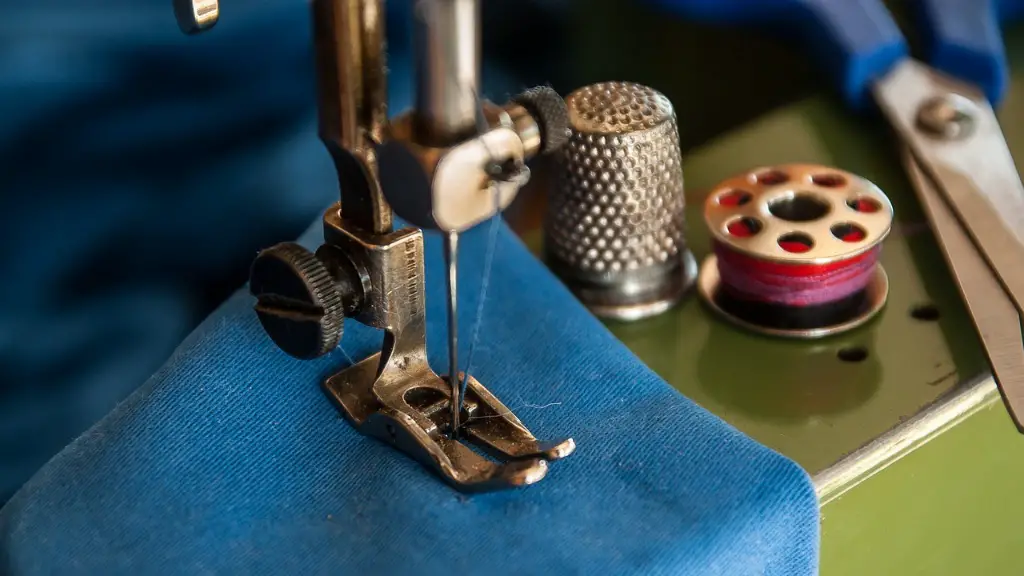Background History
The modern sewing machine has its roots in the inventions of Thomas Saint and Barthelemy Thimonnier in the early 19th century. An Englishman, Thomas Saint, was the first one to put together a practical design for a machine which could be used in the arts of sewing. He patented his machine as early as 1790, although it is not known whether it was actually made.
A Frenchman by the name of Barthelemy Thimonnier, however, was the first to build a practical machine for use in clothing production. This machine was based on the same design principles as Saint’s, but with a few additional improvements. The machine was intended for the production of military uniforms, but it was soon adopted for the production of all types of clothing.
The Expansion of Industrial Sewing Machines
The development of industrial sewing machines and the rise of the industrial age in the mid 19th century put an end to the hand-sewing of clothing. Before this time, clothing had been sewn completely by hand, and it was not particularly efficient. Industrial machines allowed clothing and other fabrics to be sewn much more quickly and efficiently.
Isaac Singer and Elias Howe were two of the most prominent makers of industrial sewing machines in the mid to late 19th century. Singer patented the first practical sewing machine in 1851, which was a major improvement on previous designs. Howe patented a machine in 1846 which included a needle with an eye at the point and a shuttled bobbin system that allowed for easier threading.
Singer and Other Manufacturers
Singer’s sewing machine company flourished in the late 19th century and into the 20th century, with its machines becoming increasingly popular. By the turn of the century, the company had sold over two million machines worldwide. Other manufacturers were also beginning to emerge, such as the White Sewing Machine Company and the New Home Sewing Machine Company.
The growth of the sewing machine industry was tremendous, and it soon began to influence the fashion industry. Through the use of industrial machines, clothing designs began to be mass-produced and standardized, ushering in a new era of fashion.
Impact of Automatic Sewing Machines
The emergence of automatic sewing machines towards the beginning of the 20th century had a huge impact on the clothing industry. These machines allowed for the production of garments at a much faster rate, and they provided higher quality seams than hand sewing.
The development of automatic machines allowed companies to produce large numbers of garments in a relatively short period of time. This was especially useful for the production of clothing for military uniforms during World War II.
The Modern Sewing Machine
The modern sewing machine looks quite different from the machines of the past. Modern machines are typically powered by electricity, and they often include a variety of specialized attachments. This allows them to perform a wide variety of tasks, such as embroidery, quilting, and appliqué work.
Computerized sewing machines, which are operated by a computer, are also becoming increasingly popular. These machines are capable of performing complex tasks with great precision and accuracy.
Usage and Popularity of Sewing Machines
Sewing machines have become a staple in the home of many hobbyists and sewing enthusiasts. They are also used by professional tailors, seamstresses, and fashion designers. Sewing machines are used to create a wide range of different garments, from dresses and shirts to trousers and suits.
Sewing continues to be a popular activity in the modern world, and the advances in technology and design have made sewing machines more user-friendly and versatile than ever before.
Accessibility and Significance of Sewing Machines
The accessibility and affordability of modern sewing machines has made them a great tool for creative expression. They have become much more popular in recent years, as they allow people to easily create their own clothes and accessories.
Sewing machines are not just a tool for producing clothes; they are a symbol of a certain type of creative process. Sewing machines are a way for people to express their creativity, and they have come to represent a passion for craftsmanship, design, and self-expression.
Economic Impact of Sewing Machines
The development of the sewing machine has had a significant economic impact on the fashion industry. Thanks to the production advantages provided by industrial machines, clothing can be made more quickly and cheaply than ever before. This has enabled companies to produce large amounts of clothing in a relatively short period of time.
In addition, the advances in technology and design have allowed for a greater variety of garments to be created in less time. This has led to the growth of the fashion industry and the emergence of new markets and businesses.
Environmental Impact of Sewing Machines
The environmental impact of sewing machines has been largely positive. The use of industrial machines has freed up resources, as they require fewer people to produce the same amount of clothing.
In addition, the automation of the production process has reduced the amount of energy required to produce clothing. This has made clothing production more efficient and has resulted in lower production costs.
Future of Sewing Machines
The future of sewing machines looks very promising. As designers continue to explore new ways to use computers in the production process, sewing machines will become even more advanced and versatile.
The availability of 3D printing technology and advances in robotics are also paving the way for the continued development of customized and personalized fashion. This is likely to result in an expansion of the sewing machine market in the years to come.


